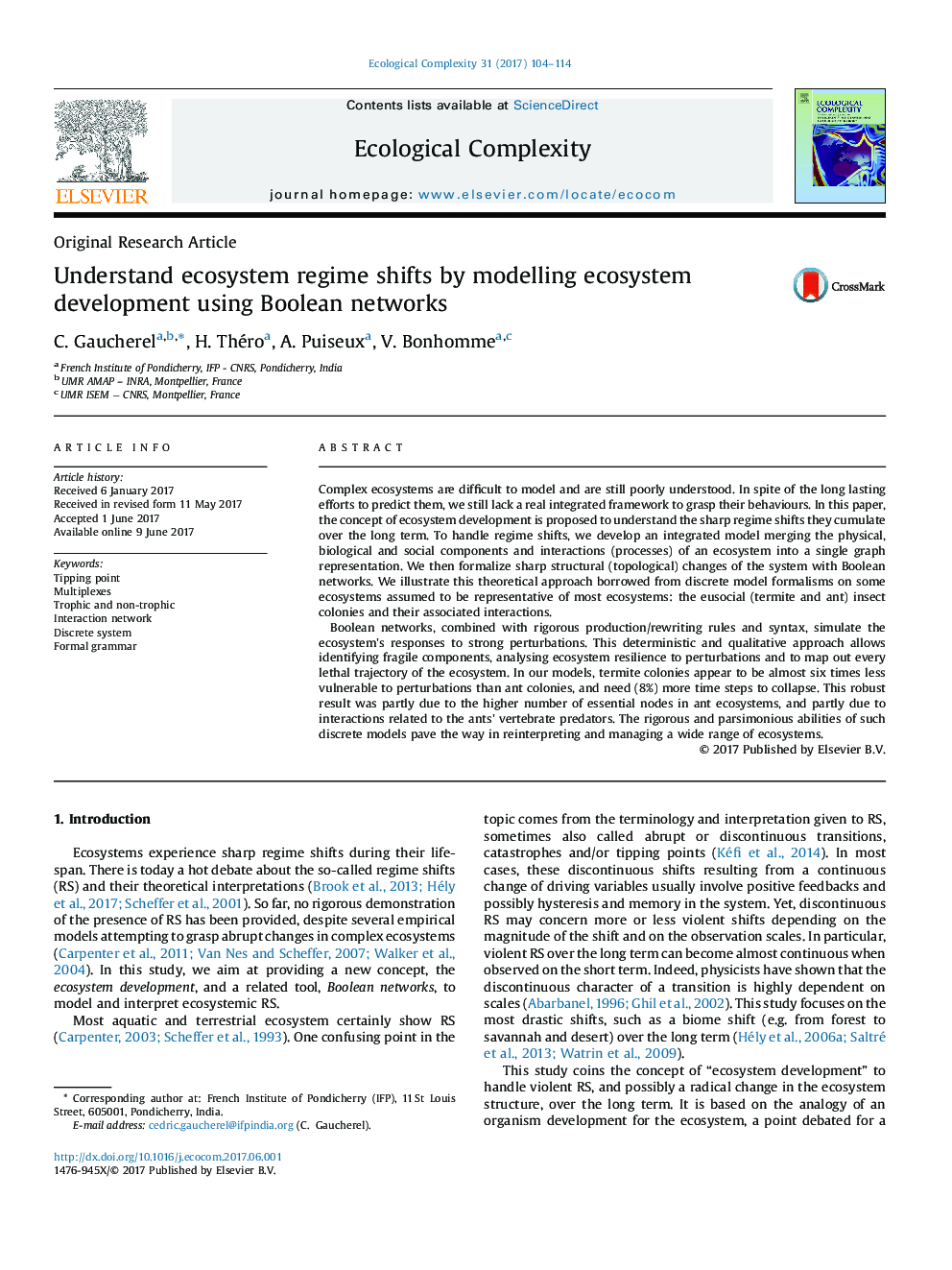| Article ID | Journal | Published Year | Pages | File Type |
|---|---|---|---|---|
| 5741263 | Ecological Complexity | 2017 | 11 Pages |
Complex ecosystems are difficult to model and are still poorly understood. In spite of the long lasting efforts to predict them, we still lack a real integrated framework to grasp their behaviours. In this paper, the concept of ecosystem development is proposed to understand the sharp regime shifts they cumulate over the long term. To handle regime shifts, we develop an integrated model merging the physical, biological and social components and interactions (processes) of an ecosystem into a single graph representation. We then formalize sharp structural (topological) changes of the system with Boolean networks. We illustrate this theoretical approach borrowed from discrete model formalisms on some ecosystems assumed to be representative of most ecosystems: the eusocial (termite and ant) insect colonies and their associated interactions.Boolean networks, combined with rigorous production/rewriting rules and syntax, simulate the ecosystem's responses to strong perturbations. This deterministic and qualitative approach allows identifying fragile components, analysing ecosystem resilience to perturbations and to map out every lethal trajectory of the ecosystem. In our models, termite colonies appear to be almost six times less vulnerable to perturbations than ant colonies, and need (8%) more time steps to collapse. This robust result was partly due to the higher number of essential nodes in ant ecosystems, and partly due to interactions related to the ants' vertebrate predators. The rigorous and parsimonious abilities of such discrete models pave the way in reinterpreting and managing a wide range of ecosystems.
